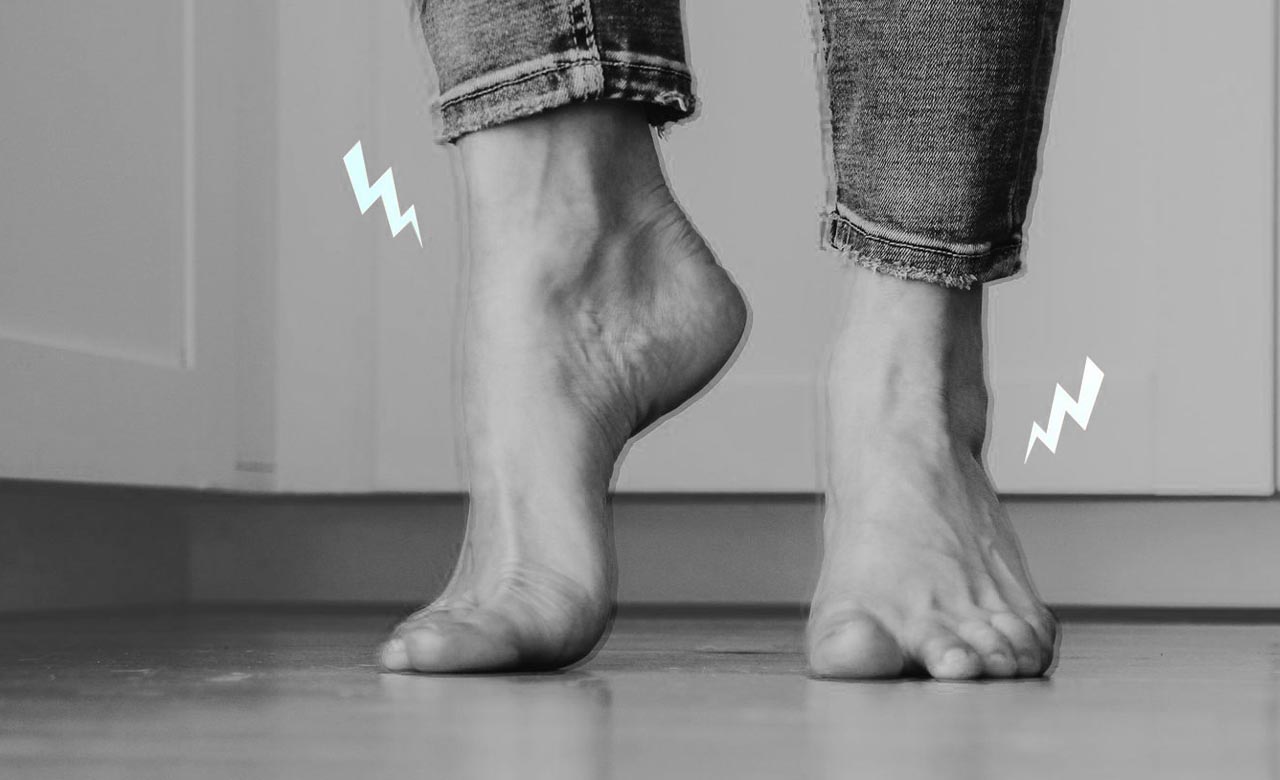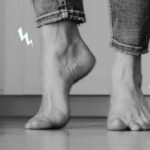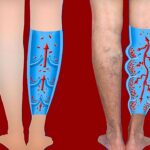After spending a lot of time sitting still, it is very typical to experience tingling and numbness in your foot or lower leg. Sitting compresses the nerves in that area of your body, reducing blood flow to the area and resulting in numbness. When you get up and allow your blood flow to return to normal, this transient situation ought to fade away. However, the question still remains, “Why does my leg tingle?” The answer to that can be due to various causes.
Why Does Leg Tingling Occur Due to PAD?
The main cause of leg tingling in peripheral artery disease is decreased blood supply to the lower limbs. The muscles and nerves in the legs may not get enough oxygen and nutrients when the arteries narrow or become clogged as a result of plaque accumulation. This inadequate blood supply can cause a number of symptoms, such as weakness, tingling, and numbness in the legs.
Symptoms of Leg Tingling Due to PAD
In addition to leg tingling, people with PAD may have a variety of symptoms, such as:
- Intermittent Claudication: Leg cramps or soreness, especially after physical exertion, are the hallmark of intermittent claudication, which usually goes away with rest.
- Numbness or Weakness: Reduced blood flow can result in numbness or weakness in the legs, which can make it difficult to walk or carry out daily tasks.
- Coldness or Discoloration: Due to reduced circulation, the affected leg may feel cooler than the other and may have a pale or bluish appearance.
- Slow Healing: Due to insufficient blood flow, wounds or sores on the legs may heal slowly or not at all.
Diagnosis
A comprehensive evaluation of the patient’s medical history, a physical examination, and diagnostic testing are necessary for an accurate diagnosis of PAD. ABI measurement, CT angiography, and magnetic resonance angiography (MRI) are a few examples of these.
How to Effectively Treat Leg Tingling Caused by PAD?
Improving blood flow, minimizing symptoms, and lowering the risk of consequences are the main goals of effective care for PAD-related limb tingling. Possible course of treatment options include:
Lifestyle Changes: Reducing the symptoms of PAD and enhancing cardiovascular health require a healthy lifestyle that includes regular exercise, quitting smoking, and eating a balanced diet.

Medication: In order to treat symptoms and limit the risk of complications, doctors may give medications such as antiplatelet agents, cholesterol-lowering pharmaceuticals, and blood pressure and blood sugar management medications.
Peripheral Angioplasty and Stenting: These minimally invasive procedures can be used to expand restricted arteries and enhance blood flow to the legs in cases of severe arterial blockages.
Peripheral Bypass Surgery: To reroute blood flow around the blocked artery and restore circulation to the legs in severe situations where arterial obstructions are significant, bypass surgery may be required.
Exercise Therapy: Individualized, supervised exercise programs can help reduce the symptoms of intermittent claudication and extend one’s walking distance.
Why Does My Leg Tingle?
Peripheral artery disease (PAD) is not the only underlying cause of leg tingling. Accurate diagnosis and efficient management require knowledge of these alternate causes and the corresponding therapeutic options. The following lists several typical non-PAD reasons for tingling in the legs, along with the remedies for each:
1. Nerve Compression
Leg tingling may result from compression of the nerves in the legs as a result of diseases including sciatica, spinal stenosis, or ruptured discs. This happens when the nerves are squeezed or pinched, impairing regular nerve function and producing tingling or numbness.

2. Peripheral Neuropathy
This condition is characterized by damage to the peripheral nerves. It can be brought on by a number of conditions, including diabetes, autoimmune illnesses, infections, and exposure to toxins. Peripheral neuropathy frequently manifests as leg tingling in addition to numbness.
3. Vitamin Deficiencies
Nerve damage and neurological symptoms, such as leg tingling, can result from deficiencies in some vitamins, such as vitamin B12 or vitamin D. For the health of your nerves, make sure you’re getting enough of these vitamins from your food or supplements.
4. Restless Leg Syndrome (RLS)
The neurological condition known as restless leg syndrome (RLS) is typified by an insatiable drive to move the legs and is sometimes accompanied by unpleasant feelings like tingling or creeping. Usually, these feelings go worse during rest and get better as you move.
5. Circulatory Disorders
Blood circulation-related ailments such as deep vein thrombosis (DVT) and venous insufficiency can impair blood flow to the legs, causing tingling feelings. Abnormal sensations such as tingling or numbness are caused by poor circulation, which deprives the nerves and tissues of oxygen and nutrients.
6. Muscular Overuse or Exhaustion
Excessive or prolonged physical activity can cause muscular overuse or exhaustion, which can cause tingling or numbness in the legs. These symptoms can be lessened by getting enough sleep and staying hydrated.
Common Signs of PAD
Leg tingling is a frequent symptom of PAD, brought on by a reduction in blood flow to the lower limbs. A prompt diagnosis and appropriate therapy are necessary for the effective management of symptoms.
A complete treatment plan that includes medication, lifestyle changes, and interventional treatments can significantly improve the overall well-being and symptoms of people with PAD. For appropriate treatment, it’s crucial to speak with a healthcare provider if you have leg tingling or any other symptoms.




